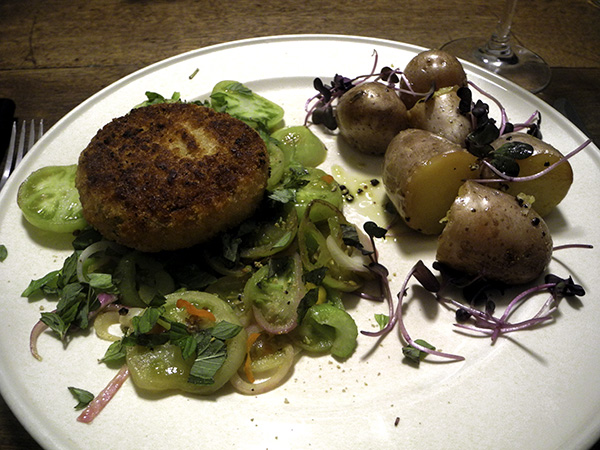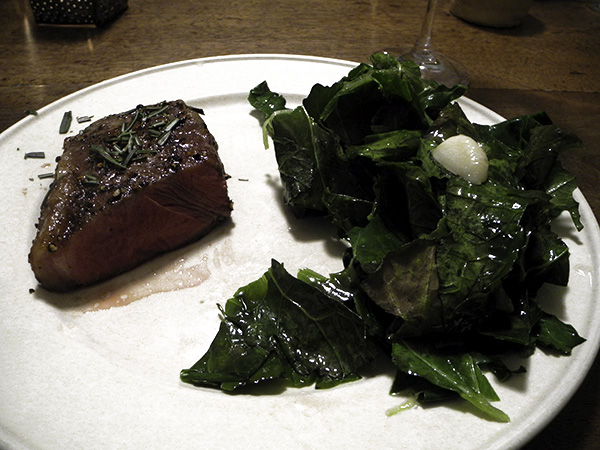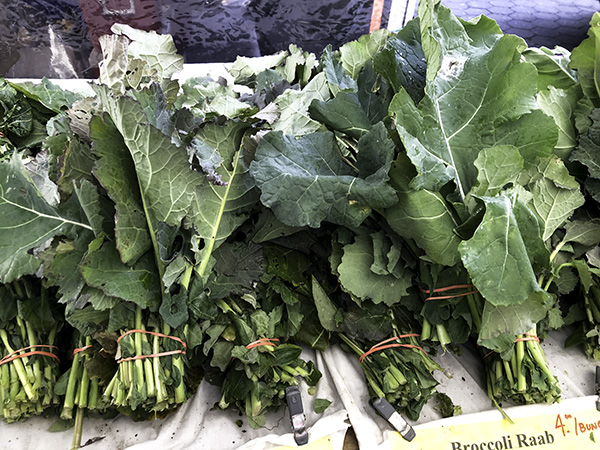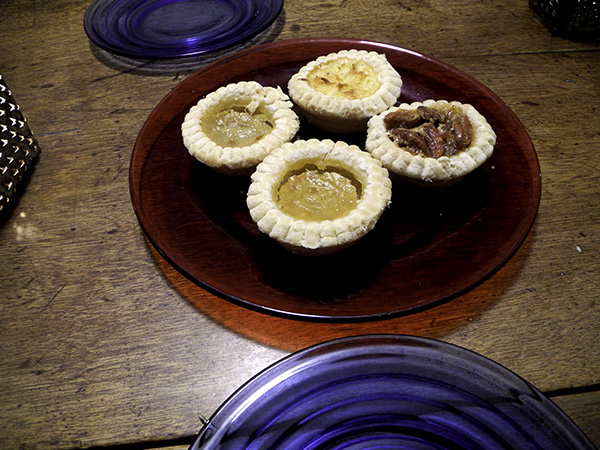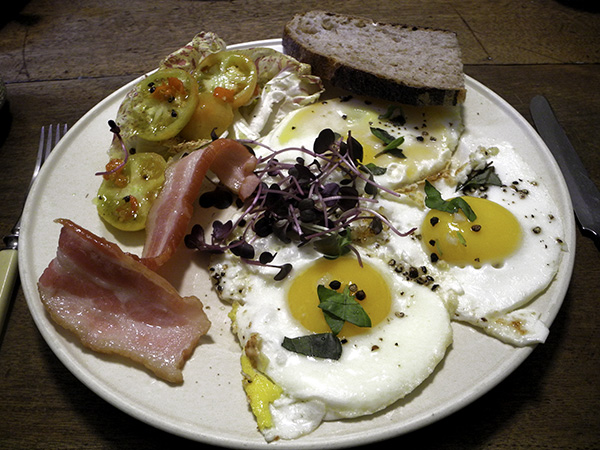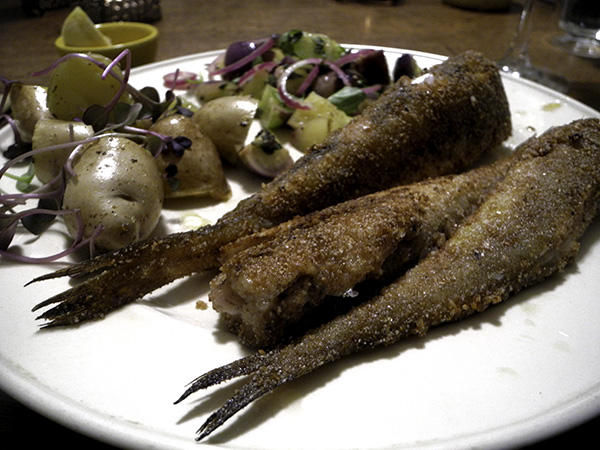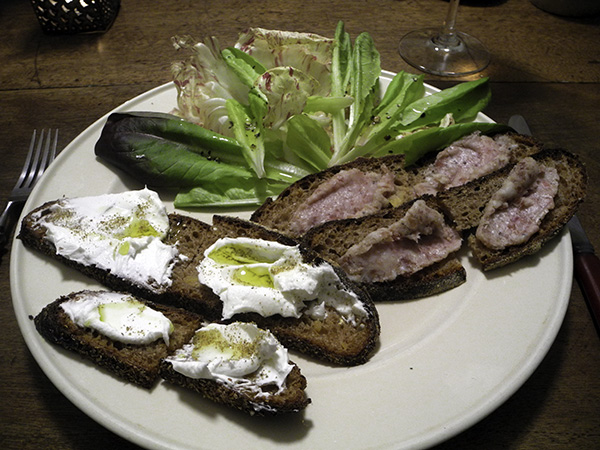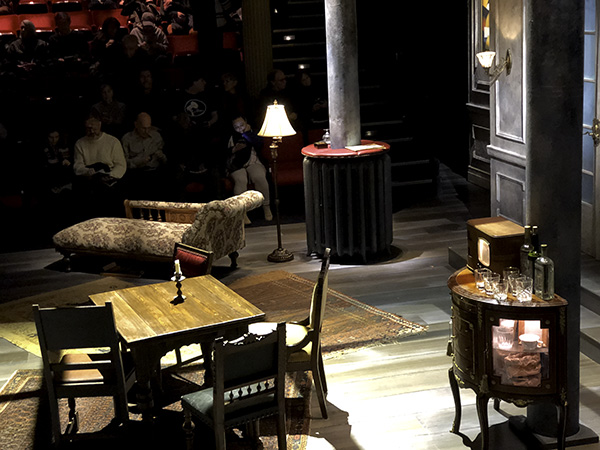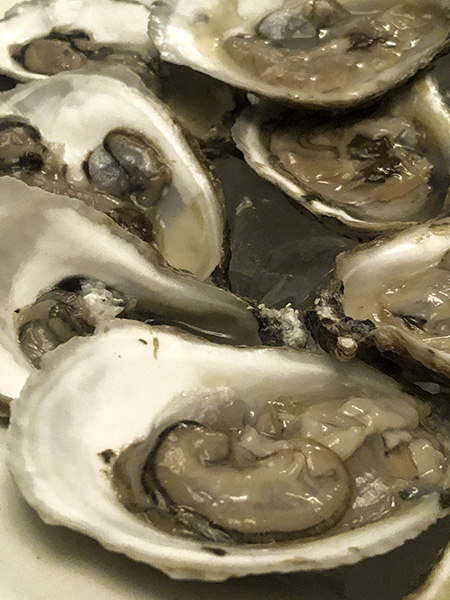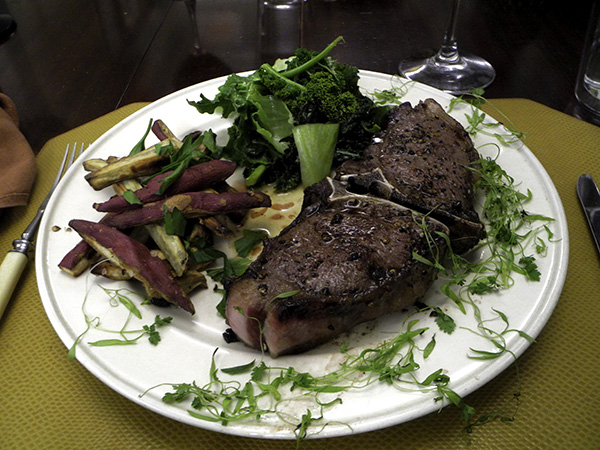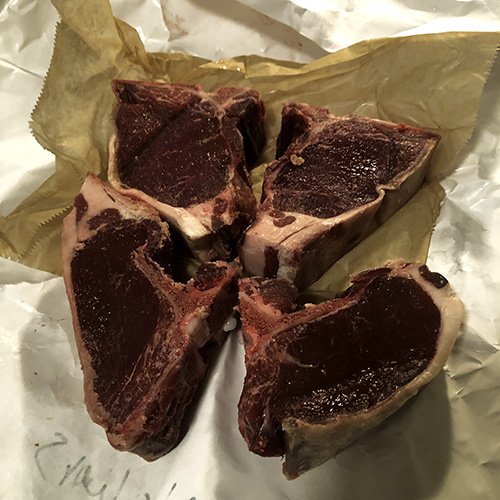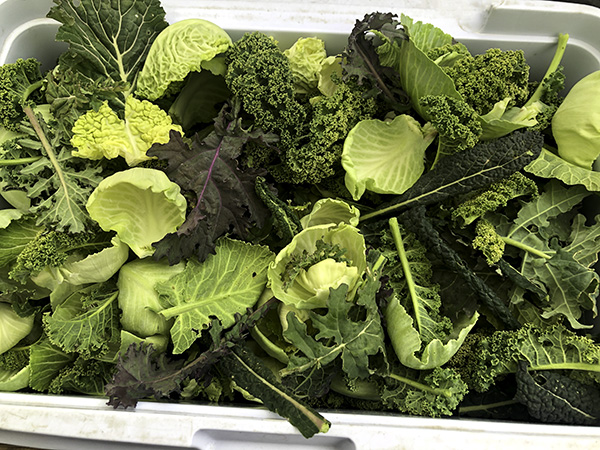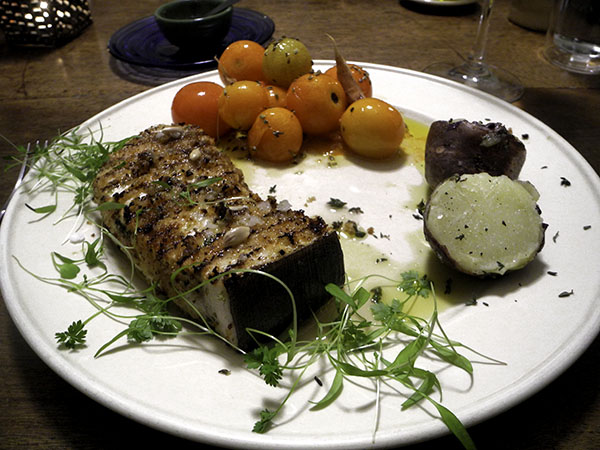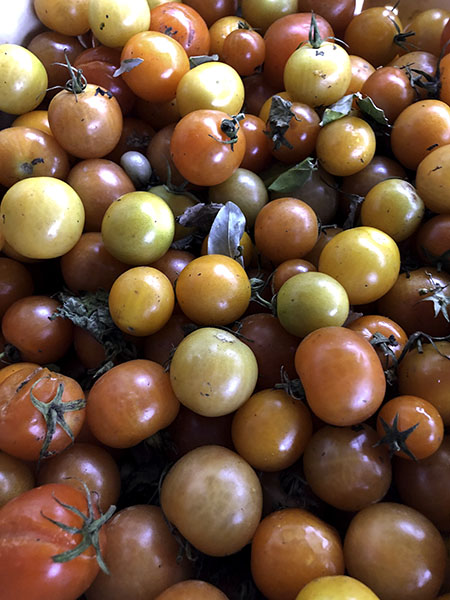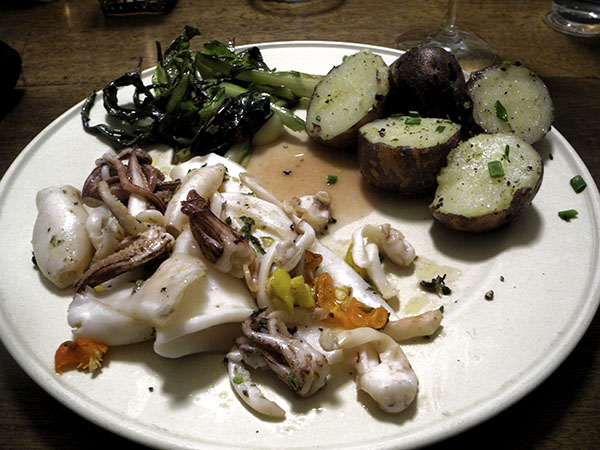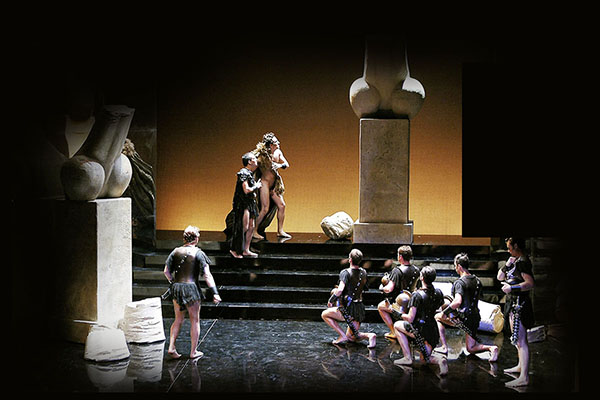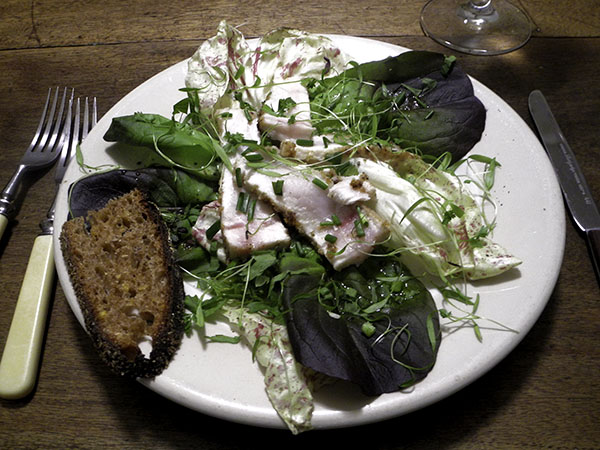
The only swordfish steaks left inside the fishers’ bucket on Friday when I arrived at his stand in the Union Square Greenmarket were a bit larger than what we normally share, so, at Paul’s suggestion, that evening I decided to cut off a smaller section, grill it with the other two, larger parts, that we had for dinner that night, but then put it away in the refrigerator, immersed in olive oil, to use in an appetizer the next day, its character to be determined then.
That’s exactly what I did, and it was really delicious. It was an incredibly simple operation, but I should have arranged it to look more simple than it did. My mind was already on the next course however, so the minimal aesthetic just didn’t happen.
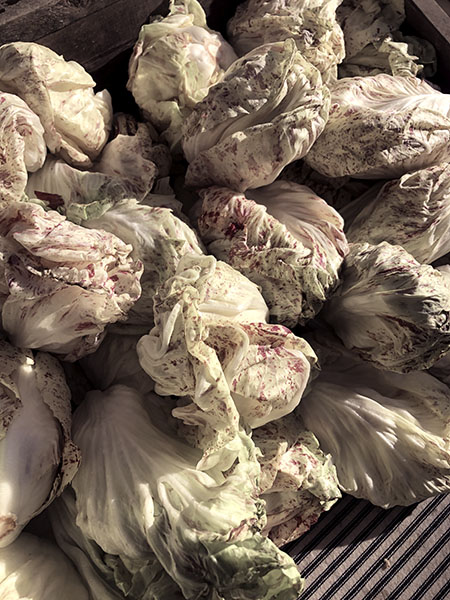
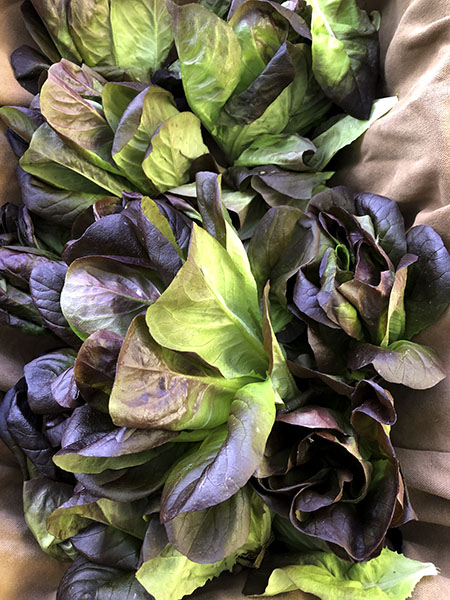
- four ounces of a swordfish steak from Pura Vida Seafood that had been marinated and grilled the day, after which it had been refrigerated and submerged in olive oil overnight, brought to room temperature the next evening, removed from the oil, cut into 8 thin slices, arranged on a bed of washed purple butter lettuce from Fledging Crow Vegetables and some leaves from a radicchio variegato di Castelfranco from Campo Rosso Farm that had already prepared, dressed with a good Cretan (Chania) olive oil, Renieris Estate ‘Divina’ (a Koroneiki varietal) and a squeeze of organic California lemon, both from Chelsea Whole Foods Market, local P.E. & D.D. sea salt and freshly ground black pepper, sprinkled with chopped small stems and leaves from a small green stalk of celery from Norwich Meadows Farm, and also some scissored chives from Philipps Farms, the entire salad garnished with micro chervil from Two Guys from Woodbridge
- there were slices from a loaf of the excellent ‘homadama’ (wheat, corn, water, maple syrup, salt, slaked lime) from Lost Bread Co.
- the wine was a really excellent Spanish (Jerez) fortified wine, Gonzalez-Byass “Tio Pepe” Fino Sherry, from Foragers Wines
Having the swordfish on hand for an appetizer meant I could reduce or simplify the main course, which, because of how special the entrée turned out to be, was an excellent idea. The goat was beautiful, perfectly cooked, and very simple to carve, but above all, absolutely delicious, at least as tasty as a much more expensive rack of lamb [this perfect small rack, plenty for the 2 of us, set me back just less than $16].
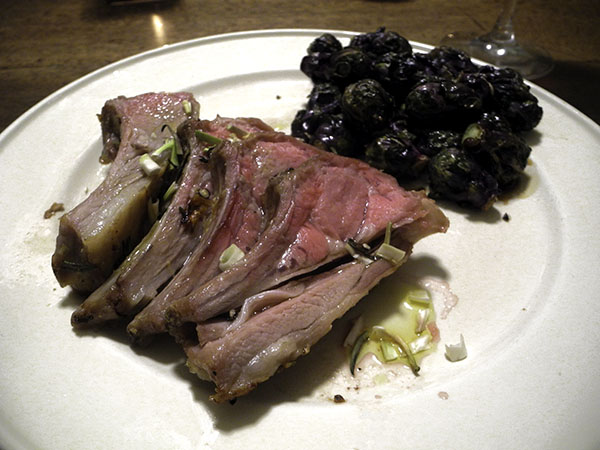
- one small (13.5-ounce) rack of goat from Marie, who was managing the Union Square table of Lynnhaven Dairy Goats, dry-marinated for about 2 hours [the time could be less, if you started late, or much longer, but in any event I try to have it outside the refrigerator only for the last hour] in a mixture of rosemary leaves from Keith’s Farm, removed from their stems; 2 medium crushed fresh bay leaves from Uncle Vinny’s, possibly Columbian, from Westside Market; the zest from a small Chelsea Market lemon; a small part of one crushed dried habanada pepper; sea salt, and some freshly-ground black pepper, after which the goat was dried with paper towels and coated lightly with olive oil, the oven preheated to 425º, a heavy oval enameled cast iron pan placed inside for 10 minutes, the rack arranged inside the hot pan flesh side down and roasted for about 17 minutes this time [the instant thermometer read exactly 120º then, the first time I checked], for rare to medium rare doneness, and not at all bloody, allowed to rest for 7 minutes or so, loosely covered with foil to keep warm, the ribs then separated into 8 chops with a heavy knife and arranged on the 2 plates, finished with a squeeze of the lemon from which the zest had been removed earlier, drizzled with a bit of olive oil,

and garnished with some of the new growth at the top of a horseradish root purchased the day before from Holy Schmitts Horseradish in the Greenmarket, chopped
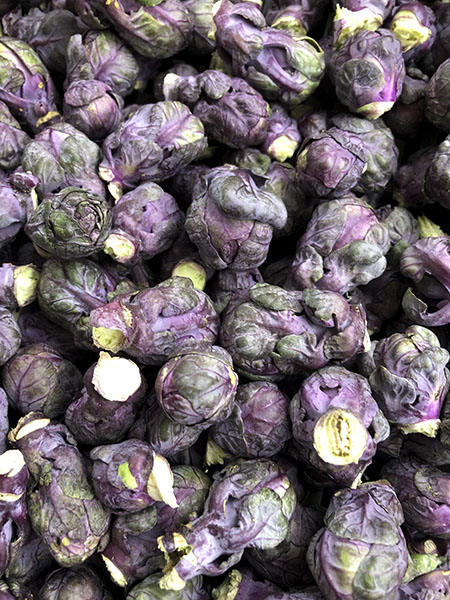
- more than three quarters of a pound of really gorgeous small Brussels sprouts from John D. Madura Farms, washed, trimmed, dried, tossed with olive oil, sea salt and freshly-ground black pepper, roasted in a the same 425º oven as the goat on a large unglazed Pampered Chef oven pan until they were browned and crisp on the outside, or for about 15 minutes, and finished with a small amount of decent balsamic vinegar flicked onto them with a small brush
- the wine was a Portuguese (Douro) red, Quinta do Pôpa ‘Contos da Terra’, Douro Red 2016, from Astor Wines
